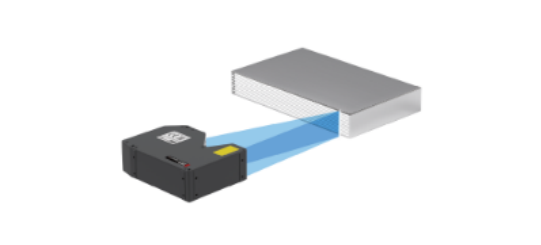3D Line Laser Measuring Instruments can measure the geometric parameters and spatial positions of various objects through 3D surface analysis. Below are common measurement objects and application scenarios:

1. Industrial Component Measurement
Dimensional Measurement: Precisely measures dimensional parameters of components such as length, width, height, diameter, and wall thickness. Examples include measuring the bore diameter of automotive engine blocks, the cylindricity of cylinders, and the length and twist angle of aero-engine blades.
Form Inspection: Used to detect form deviations in components, such as flatness, straightness, roundness, perpendicularity, and parallelism. For instance, for precision machined shaft parts, it can detect cylindricity errors and straightness deviations of the axis.
Assembly Verification: Measures assembled components to check the accuracy of positional relationships between parts and whether clearances meet requirements. Applications include verifying gap uniformity between car doors and the body frame, and inspecting the installation position accuracy of components within the engine compartment during automotive body assembly.
2. Electronics Manufacturing
Chip Package Inspection: Measures the dimensions of chip packages, and the position and pitch of leads/pins, ensuring packaging quality meets standards and preventing issues like short or open circuits.
Circuit Board (PCB) Inspection: Inspects the height of components on Printed Circuit Boards (PCBs), the shape and height of solder joints, and the board's flatness. This helps improve soldering quality and electrical performance.
3. Reverse Engineering
Digitization of Physical Models: Scans existing physical objects using a 3D line laser measuring instrument to acquire their 3D data and convert it into digital models. These digital models can be used for product replication, design improvement, or rapid prototyping. Examples include digital archiving of antiques and artworks, or reverse modeling older products lacking CAD data for modernized production.
Design Optimization: Analyzes product structure and appearance design through measurement and modeling of physical samples, identifying potential issues or areas for improvement, thereby providing data support for redesign. For example, scanning ergonomic products to optimize their shape based on measurement data, enhancing user comfort.
4. Quality Control & Inspection
Casting and Forging Inspection: Detects surface defects, dimensional accuracy, and form deviations in castings and forgings. Identifies issues arising during casting or forging processes, such as porosity, sand inclusions, and deformation, enabling timely corrective actions and improved product quality.
Plastic Part Inspection: Measures the dimensional accuracy and shape stability of plastic injection molded parts, checking for defects like sink marks and warpage. This aids in optimizing injection molding process parameters and improving part quality.
5. Other Fields
Architecture & Civil Engineering: Used for measuring building profiles, structural deformation monitoring, and surface profile measurement of infrastructure like roads and bridges. Applications include monitoring settlement and deformation of buildings during construction, or creating 3D models of historical structures to inform preservation and restoration efforts.
Biomedical: Enables 3D measurement of human organs, bones, etc., assisting medical diagnosis and treatment. In orthodontics, for instance, scanning dental models provides precise data for developing treatment plans. In orthopedic surgery, it helps surgeons accurately understand bone morphology and pathology for planning personalized surgical procedures.
Atometrics AR-Series 3D Line Laser Displacement Sensors: The Atometrics AR-Series is capable of measuring thickness, flatness, 3D profile, profile tolerance, step height, position tolerance, coplanarity, defects/flaws, and more, with accuracy reaching up to the sub-micron level.